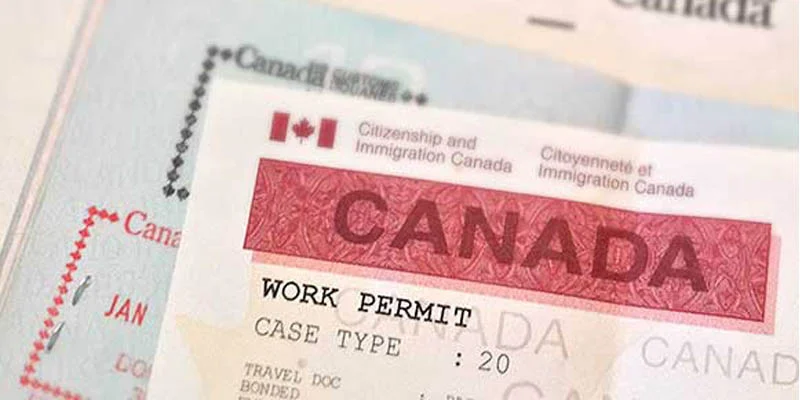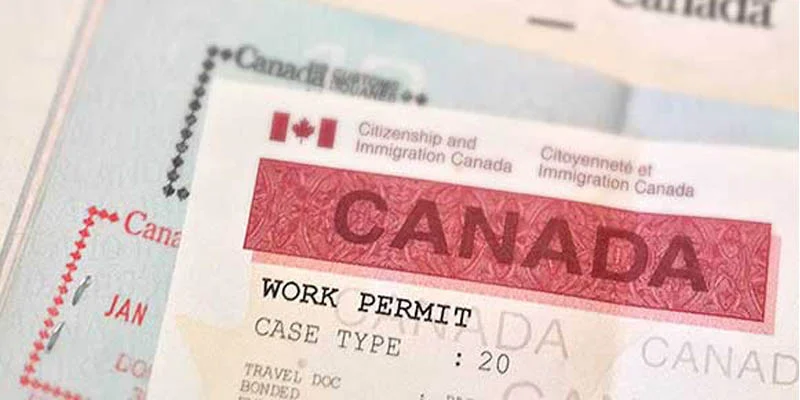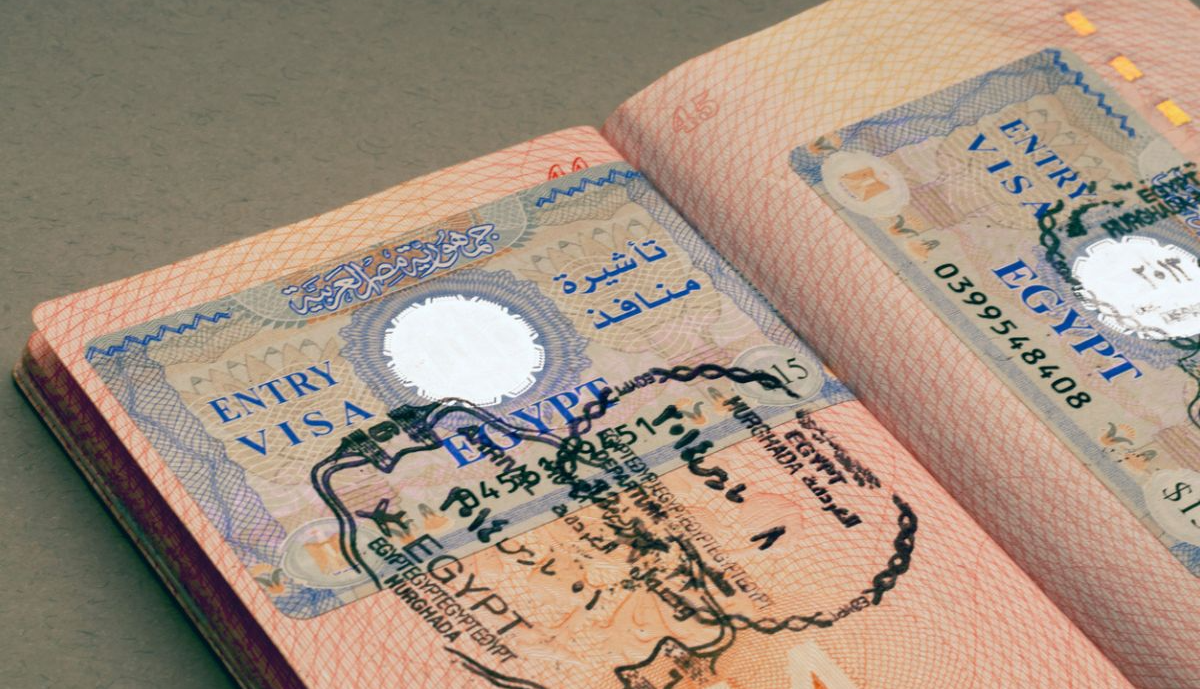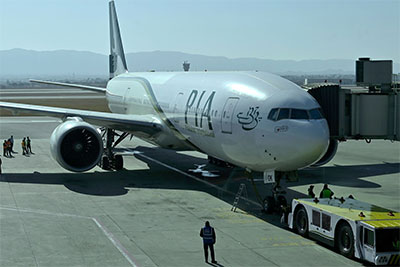
Canada continues to attract global talent, offering diverse opportunities for individuals seeking to work in Canada visa . As we move further into 2025, understanding the intricate landscape of Canadian work permits is crucial for anyone hoping to embark on this journey. This detailed article aims to provide a thorough overview, helping you check if you qualify to work in Canada and navigate the application process effectively. We will delve into the various types of work permits, essential eligibility criteria, recent policy updates, and practical advice for a successful application.
The Landscape of Canadian Work Permits in 2025
The Canadian work permit system is designed to address labor market needs, facilitate economic growth, and protect the rights of foreign workers. In 2025, Canada maintains its commitment to welcoming skilled individuals, while also implementing strategic adjustments to its immigration policies. These adjustments aim to streamline processes, target specific sectors facing labor shortages, and ensure a fair and efficient system for all applicants. The ability to work in Canada is a dream for many, and with the right information, it can become a reality.
General Eligibility Requirements: The Foundation of Your Application
Before exploring specific Canadian work permit streams, it's essential to understand the foundational eligibility criteria that apply to nearly all applicants. Meeting these general requirements is the first step in determining if you qualify to work in Canada.
- Intention to Leave Canada: You must convince an immigration officer that you will leave Canada when your work permit expires. This is a fundamental principle of temporary residency.
- Sufficient Funds: You need to demonstrate that you have adequate financial resources to support yourself and any accompanying family members during your stay in Canada, as well as funds for your return journey. This ensures you won't become a burden on Canadian social services.
- No Criminal Record: A clean criminal record is paramount. You must obey all Canadian laws and have no history of criminal activity. For many applicants, particularly from certain countries, a police clearance certificate will be a mandatory document. This emphasizes Canada's commitment to safety and security.
- Good Health: You must be in good health. Depending on your country of origin and the duration of your intended stay, a medical exam may be required. This helps protect the health and safety of the Canadian public.
- Not a Security Risk: You must not pose a security risk to Canada. Comprehensive background checks are part of the application process to ensure national security.
- Eligible Employer (for Employer-Specific Permits): If you are applying for an employer-specific work permit, your prospective employer must be legitimate and not listed as "ineligible" by Immigration, Refugees and Citizenship Canada (IRCC). This protects both foreign workers and the integrity of the Canadian labor market.
Successfully demonstrating compliance with these general eligibility criteria is crucial for any aspiring foreign worker looking to work in Canada in 2025.
Types of Canadian Work Permits: Your Pathway to Employment
Canada offers two primary categories of work permits, each with distinct requirements and advantages: employer-specific work permits and open work permits. Understanding the differences between these types of work permits is key to determining which pathway is most suitable for your individual circumstances.
1. Employer-Specific Work Permits (Closed Work Permits): Tied to a Specific Job
Employer-specific work permits, often referred to as "closed" work permits, are the most common type of Canadian work permit. These permits are explicitly tied to a specific job, a named employer, and a designated location in Canada. To qualify to work in Canada under this category, you typically need to fulfill several key conditions:
- Valid Job Offer: A genuine and valid job offer from a Canadian employer is fundamental. This offer must detail the position, responsibilities, wages, and terms of employment. The job offer is the bedrock upon which an employer-specific work permit is built.
- Labour Market Impact Assessment (LMIA): For the vast majority of employer-specific work permits, your Canadian employer will need to obtain a positive or neutral Labour Market Impact Assessment (LMIA) from Employment and Social Development Canada (ESDC). The LMIA is a critical document that demonstrates two essential points:
- There is a verifiable need for a foreign worker to fill the job.
- No Canadian citizen or permanent resident is available or qualified to do the job after the employer has made reasonable efforts to recruit locally.
- The LMIA process involves the employer advertising the position and proving that hiring a foreign worker will not negatively impact the Canadian labor market. The LMIA can be a time-consuming step, and its approval is vital for many work permit applications. The importance of the LMIA cannot be overstated for these types of work permits.
LMIA-Exemptions: Streamlined Pathways under the International Mobility Program (IMP)
While the LMIA is a common requirement, certain occupations and programs fall under the International Mobility Program (IMP), making them LMIA-exempt. These exemptions are designed to facilitate the entry of foreign workers whose presence provides significant economic, social, or cultural benefits to Canada, or who are covered by international agreements. If you qualify to work in Canada under one of these exemptions, the process for obtaining your Canadian work permit can be significantly faster. Key LMIA-exempt categories include:
- International Agreements: This includes workers covered by agreements such as the Canada-United States-Mexico Agreement (CUSMA), formerly NAFTA, for citizens of the US and Mexico. These agreements streamline the process for certain professionals and business persons to work in Canada.
- Intra-Company Transferees: Employees of multinational corporations who are being transferred to a Canadian branch, subsidiary, or affiliate. This allows businesses to move key personnel to work in Canada without the need for an LMIA, recognizing the existing employment relationship.
- Workers Providing Significant Benefit: Individuals whose work is deemed to provide significant economic, social, or cultural benefits to Canada. This broad category can include highly skilled workers, academics, artists, and those involved in research or specialized projects that benefit the country.
- Reciprocal Employment Programs: Programs that allow young people and professionals to gain international experience, such as those under the International Experience Canada (IEC) initiative. These programs are often based on reciprocal agreements with various countries, allowing Canadian youth to gain experience abroad and foreign youth to work in Canada.
- Global Talent Stream (GTS): A component of the Temporary Foreign Worker Program, the GTS is designed for employers in specific high-growth sectors (primarily tech) who need to hire highly-skilled foreign workers quickly. The GTS offers expedited processing of LMIAs and work permits (often within two weeks), making it a highly attractive option for tech workers looking to work in Canada. This stream recognizes the urgency in filling critical positions and the importance of global talent.
Understanding whether your specific situation or job offer falls under an LMIA-exempt category is crucial, as it can significantly impact the application process and processing times for your Canadian work permit. Many individuals successfully work in Canada through these streamlined pathways.
2. Open Work Permits: Flexibility in Employment
Open work permits offer greater flexibility, allowing you to work for almost any employer in Canada and in most occupations. Unlike employer-specific work permits, you do not need a specific job offer or an LMIA to apply for an open work permit. Eligibility for open work permits is typically based on specific circumstances or existing status in Canada. These types of work permits are highly sought after due to the freedom they offer to foreign workers.
Here are the common pathways to obtaining an open work permit in 2025:
- Post-Graduation Work Permit (PGWP): This is one of the most popular open work permit options for international students who have graduated from a designated learning institution (DLI) in Canada. The PGWP allows eligible graduates to gain valuable Canadian work experience, which can often lead to permanent residence pathways.
- Eligibility: To qualify for a PGWP, you must have completed an eligible program of study at a DLI in Canada. The length of your PGWP typically corresponds to the length of your study program, up to a maximum of three years.
- 2025 Changes to PGWP: It's important to note recent changes affecting PGWP eligibility. Starting November 1, 2024, college and non-degree program graduates generally need to have completed a program in an eligible field of study (e.g., STEM, healthcare, trades). University graduates with bachelor's, master's, or doctoral degrees are generally unaffected by this field of study restriction. Additionally, all PGWP applicants must meet specific language proficiency requirements in English or French. These changes are part of broader efforts to align immigration with labor market needs and manage international student numbers, impacting who can work in Canada via this route.
- Spousal Open Work Permit (SOWP): The SOWP allows spouses or common-law partners of certain temporary residents in Canada to work in Canada. However, significant changes to SOWP eligibility came into effect on January 21, 2025.
- Spouse/Common-Law Partner of a Skilled Worker: As of January 21, 2025, only spouses or common-law partners of high-skilled workers in Canada are generally eligible for an SOWP. This means the principal worker must be employed in an occupation classified under Training, Education, Experience and Responsibilities (TEER) Category 0, 1, 2, or 3 of the National Occupational Classification (NOC) system. Furthermore, the principal worker's work permit must have at least 16 months of validity remaining at the time the SOWP application is submitted. This change significantly narrows the pool of eligible spouses compared to previous years, impacting many who wished to work in Canada.
- Spouse/Common-Law Partner of an International Student: Similarly, as of January 21, 2025, SOWP eligibility for spouses of international students is restricted. The international student must be enrolled in a Master's, Doctoral, or designated professional degree program (e.g., Doctor of Dental Surgery, Bachelor of Law, Doctor of Medicine) at a Canadian institution. Spouses of students in other programs are generally no longer eligible for an SOWP. These adjustments are part of the broader strategy to manage international student intake and ensure that those who come to work in Canada through spousal ties are linked to higher-skilled categories.
- Dependent Children: As of January 21, 2025, dependent minor children of foreign workers are largely no longer eligible for open work permits. This is a significant change impacting family reunification for many foreign workers.
- Bridging Open Work Permit (BOWP): The BOWP is designed for individuals who have applied for permanent residence in Canada under certain economic immigration programs and are waiting for a final decision on their PR application.
- Eligibility: To qualify for a BOWP, you must:
- Be physically present in Canada (to reside outside Quebec).
- Hold a valid work permit, have maintained status, or be eligible for restoration of status.
- Be the principal applicant on your permanent residence application.
- Have submitted a complete application for permanent residence and received an Acknowledgment of Receipt (AOR) letter.
- The BOWP allows eligible applicants to continue working in Canada while their permanent residence application is being processed, preventing gaps in employment and allowing them to continue to work in Canada seamlessly.
- International Experience Canada (IEC) Participants: This program offers various categories (e.g., Working Holiday, Young Professionals, International Co-op) that provide open work permits to eligible youth from countries with bilateral youth mobility agreements with Canada. The IEC is a popular pathway for young individuals to gain international experience and work in Canada.
- Vulnerable Workers: Individuals in Canada who are experiencing abuse or at risk of abuse in the context of their employment may be eligible for an open work permit. This policy aims to protect foreign workers from exploitation and allow them to leave abusive situations without losing their ability to work in Canada.
- Refugee Claimants or Protected Persons: Individuals who have made a claim for refugee protection in Canada or have been recognized as a Convention refugee or protected person by the Immigration and Refugee Board of Canada (IRB) may be eligible to apply for an open work permit.
- Temporary Resident Permit (TRP) Holders: If you hold a Temporary Resident Permit (TRP) that is valid for six months or more, you may be eligible for an open work permit.
The increasing complexity of open work permit eligibility, especially with the changes effective January 21, 2025, underscores the importance of thoroughly reviewing the specific criteria on the IRCC website to check if you qualify to work in Canada under these programs.
Key Changes and Considerations for Canadian Work Permits in 2025
The year 2025 brings several important policy updates and considerations for Canadian work permits. Staying informed about these changes is crucial for successful application and for understanding your ability to work in Canada.
Changes to Spousal Open Work Permits (Effective January 21, 2025)
As highlighted, the most significant policy change impacting work permits in 2025 pertains to Spousal Open Work Permits (SOWP).
| Category (Principal Applicant) | Previous SOWP Eligibility (Pre-Jan 21, 2025) | New SOWP Eligibility (Post-Jan 21, 2025) | Impact on Foreign Workers |
- Understanding Your Eligibility: The core challenge for prospective foreign workers is to clearly understand the eligibility criteria for various Canadian work permit programs. Immigration policies are dynamic, and what was true a year ago might have changed in 2025. Therefore, actively seeking current and accurate information is paramount to check if you qualify to work in Canada. This article serves as a comprehensive guide to help you navigate these complexities.
The Canadian Work Permit Landscape in 2025: A Detailed Examination
The decision to work in Canada is a significant one, promising professional growth and the chance to experience a vibrant, multicultural society. As we look at the requirements for a Canadian work permit in 2025, it becomes clear that while Canada remains open to foreign workers, the immigration landscape is continually evolving. This guide provides an in-depth analysis of the various avenues available, the crucial eligibility criteria you must meet, and the important policy updates that could impact your application. Our goal is to empower you with the knowledge to confidently check if you qualify to work in Canada and to successfully pursue your dream of becoming a foreign worker in this welcoming nation.
I. Core Prerequisites for All Canadian Work Permits: The Unwavering Foundations
Regardless of the specific stream or type of work permit you are pursuing, there are fundamental eligibility criteria set forth by Immigration, Refugees and Citizenship Canada (IRCC) that all applicants must satisfy. These are the non-negotiable elements that demonstrate your suitability as a temporary resident in Canada. Successfully addressing each of these points is the very first step in determining if you qualify to work in Canada.
- A. Genuine Intent to Depart Canada:
- The Principle: The most crucial aspect for any temporary resident is demonstrating a clear and convincing intent to leave Canada at the end of your authorized stay. Your Canadian work permit is a temporary authorization, and immigration officers must be assured that you understand and will adhere to this condition.
- Evidence: This intent is assessed based on various factors, including:
- Ties to your home country (e.g., family responsibilities, property ownership, financial assets, ongoing business interests).
- The nature and duration of your job offer in Canada (for employer-specific permits).
- Your overall immigration history (e.g., previous compliance with visa terms).
- Any submitted applications for permanent residence. While applying for PR does not automatically disqualify you, your intent to leave at the end of the work permit period remains a factor until PR is granted.
- Impact: Failure to convince an officer of your genuine intent to leave can lead to a refusal of your work permit application, regardless of how well you meet other criteria. This is a critical hurdle for any aspiring foreign worker to overcome.
- B. Financial Self-Sufficiency: Ensuring Your Stability:
- Requirement: You must demonstrate that you have sufficient funds to support yourself and any accompanying family members (spouse, common-law partner, dependent children) during your entire stay in Canada, as well as the financial means to return to your home country.
- Purpose: This requirement ensures that you will not become a financial burden on Canadian taxpayers or require social assistance. It highlights Canada's focus on responsible immigration.
- Proof: Acceptable proof of funds can include:
- Bank statements showing personal savings.
- Proof of income from your current employment (if any).
- A letter from your employer confirming your salary (for employer-specific permits).
- Proof of financial support from family members (if applicable, though less preferred than personal funds).
- Amount: While there isn't a universally fixed amount, it must be reasonable to cover living expenses (accommodation, food, transportation, personal needs) in the specific Canadian region you plan to reside in. Researching the cost of living in your intended location can help you determine an appropriate amount.
- C. Adherence to Canadian Law: A Clean Record is Essential:
- Principle: Having no record of criminal activity is a fundamental requirement for anyone seeking to work in Canada. Canada places a high value on public safety and security.
- Background Checks: Immigration, Refugees and Citizenship Canada (IRCC) conducts thorough background checks on all applicants.
- Police Clearance Certificate: Depending on your country of citizenship and countries where you have resided for six months or more since the age of 18, you may be required to provide a police clearance certificate (also known as a police record check or certificate of good conduct). This document officially confirms your criminal record status in those jurisdictions.
- Inadmissibility: Certain criminal convictions, even those outside Canada, can render you inadmissible to Canada. It is crucial to be truthful on your application, as misrepresentation can lead to severe consequences.
- D. Good Health: Protecting Public Health:
- Requirement: You must be in good health to be eligible for a Canadian work permit. This is to protect the health and safety of Canadian citizens and permanent residents.
- Medical Exam: For many applicants, particularly those planning to stay for six months or more or who have resided in certain countries, a mandatory immigration medical exam (IME) conducted by an IRCC-approved panel physician will be required.
- Conditions: Certain medical conditions that could pose a risk to public health or safety, or place an excessive demand on Canada's health or social services, could lead to medical inadmissibility. However, there are provisions and waivers for certain situations.
- E. Absence of Security Risk:
- Commitment: Canada prioritizes national security. All applicants for a Canadian work permit undergo security screening to ensure they do not pose a security risk to the country.
- Factors: This assessment may consider various factors, including involvement in espionage, subversion, terrorism, or membership in organizations involved in such activities.
- F. Employer Eligibility (for Employer-Specific Work Permits):
- Verification: If you have secured a job offer for an employer-specific work permit, your prospective Canadian employer must be in good standing with IRCC and Employment and Social Development Canada (ESDC).
- Compliance: Employers must comply with all Canadian labor laws and regulations. Employers who have previously been found non-compliant or have engaged in exploitative practices may be deemed ineligible to hire foreign workers. This measure protects foreign workers from potential exploitation.
Meeting these general eligibility criteria is a non-negotiable aspect of applying to work in Canada. Any deficiency in these areas can lead to the refusal of your Canadian work permit application.
II. The Dual Pathways: Employer-Specific vs. Open Work Permits
Canada's work permit system is broadly categorized into two main types of work permits, each catering to different circumstances and offering varying degrees of flexibility to foreign workers. Understanding these distinctions is paramount when you check if you qualify to work in Canada.
A. Employer-Specific Work Permits (Closed Work Permits): A Targeted Approach
These are the most common types of work permits and are explicitly tied to a specific job, a named employer, and a designated location in Canada. This means you can only work in Canada for the employer and in the role specified on your permit.
- 1. The Imperative of a Valid Job Offer:
- Foundation: A genuine, written job offer from a Canadian employer is the absolute cornerstone of an employer-specific work permit application. This is not merely an informal agreement; it must be a formal document detailing the terms and conditions of your employment.
- Content: The job offer should clearly state:
- Your job title and a detailed description of your duties.
- Your wages and benefits.
- Working hours.
- The start and end dates of your employment.
- The location of employment.
- Any other relevant terms and conditions.
- Employer's Role: The employer must be a legitimate Canadian entity, operating lawfully and in good standing. Their credibility is directly linked to the success of your Canadian work permit application.
- 2. The Labour Market Impact Assessment (LMIA): A Critical Hurdle for Many:
- Purpose of the LMIA: For the vast majority of employer-specific work permits under the Temporary Foreign Worker Program (TFWP), your Canadian employer must obtain a positive or neutral Labour Market Impact Assessment (LMIA) from Employment and Social Development Canada (ESDC). The LMIA serves as a vital document, confirming that:
- There is a demonstrable need for a foreign worker to fill the position.
- No Canadian citizen or permanent resident is available or qualified to perform the job duties after the employer has conducted sufficient recruitment efforts.
- Hiring a foreign worker will not hurt the Canadian labor market.
- Employer's Responsibility: The burden of obtaining the LMIA falls squarely on the employer. This involves:
- Advertising the job vacancy widely in Canada (e.g., on the Job Bank, provincial job boards, national newspapers).
- Demonstrating the efforts made to recruit Canadian citizens or permanent residents.
- Providing details about the wages and working conditions to ensure they meet provincial and territorial labor standards.
- Paying a processing fee (currently CAD 1,000 for most streams).
- Processing Times: LMIA processing times can vary significantly depending on the stream and the volume of applications. As of early 2025, some LMIA processing times for standard applications have seen increases, emphasizing the need for employers to plan well in advance. This can directly influence when a foreign worker can actually start to work in Canada.
- Strategic Importance: A positive LMIA is essentially an endorsement from the Canadian government that hiring a foreign worker for that specific role is justified. Without it, most employer-specific work permits cannot be issued.
- 3. LMIA-Exemptions: Pathways Under the International Mobility Program (IMP):
- Rationale: Recognizing that not all foreign workers need to undergo the LMIA process, Canada has established the International Mobility Program (IMP). The IMP facilitates the entry of foreign workers whose presence aligns with Canada's broader economic, social, or cultural interests, or who are covered by international agreements, making them exempt from the LMIA requirement. These types of work permits offer a more direct route to work in Canada.
- Key LMIA-Exempt Categories for 2025:
- International Agreements (e.g., CUSMA/NAFTA): For citizens of countries with specific trade agreements with Canada (like the US and Mexico under CUSMA). Professionals in certain occupations, intra-company transferees, and traders/investors may qualify to work in Canada under streamlined processes without an LMIA. This is a well-established pathway for business and professional mobility.
- Intra-Company Transferees: This category is for employees of multinational companies who are being temporarily transferred to a Canadian branch, subsidiary, or affiliate. To qualify, the employee must have specialized knowledge, be a senior manager, or an executive, and must have been employed by the company for a specified period (typically at least one year full-time). This facilitates the operations of international businesses in Canada.
- Workers Providing Significant Benefit: This broad category includes individuals whose work in Canada is of significant economic, social, or cultural benefit. Examples include:
- Academics and Researchers: Professors, researchers, and highly specialized experts coming to Canada for short-term academic work or research projects.
- Artists and Performers: Internationally renowned artists and performers whose presence enriches Canada's cultural landscape.
- Innovation Stream Pilot (Global Hypergrowth Project): A particularly relevant stream for 2025, this pilot targets highly skilled tech talent for specific fast-growing Canadian companies. It offers LMIA-exempt work permits with expedited processing, recognizing the critical need for specialized skills in the tech sector. If you are a tech worker with relevant experience, this could be a direct route to work in Canada.
- Reciprocal Employment Programs (International Experience Canada - IEC): The IEC program allows youth (typically 18-30 or 18-35, depending on the country) from participating countries to work in Canada and gain international experience. It includes categories such as:
- Working Holiday: Provides an open work permit, allowing participants to work for almost any employer in Canada.
- Young Professionals: An employer-specific work permit for those with a job offer that contributes to their professional development.
- International Co-op (Internship): An employer-specific work permit for students undertaking internships in Canada.
- The IEC program usually opens in cycles, and interested applicants need to create a profile and await an Invitation to Apply (ITA). This is a unique opportunity for young foreign workers to gain Canadian experience.
- Post-Doctoral Fellows and Award Recipients: Individuals receiving significant Canadian awards or fellowships for research or academic pursuits.
- Emergency Repair Personnel: Workers coming to Canada to perform emergency repairs on industrial equipment.
- Advantages of LMIA-Exemptions: The primary advantage of these categories is the elimination of the often lengthy and complex LMIA process, potentially significantly reducing the processing times for your Canadian work permit. This makes these pathways highly attractive for those who qualify to work in Canada under them.
B. Open Work Permits: Unrestricted Employment Opportunities
In contrast to employer-specific work permits, open work permits offer the ultimate flexibility to foreign workers. They allow you to work for any employer in Canada (with very few exceptions, e.g., employers on the ineligible employers list, or those engaged in certain activities), and you are not tied to a specific job. This means you do not need a job offer or an LMIA at the time of application. Eligibility for these types of work permits is granted based on specific circumstances that warrant this flexibility.
- 1. Post-Graduation Work Permit (PGWP): Your Bridge from Study to Work:
- Purpose: The PGWP is a crucial program for international students who have successfully completed an eligible study program at a Designated Learning Institution (DLI) in Canada. It allows them to gain valuable Canadian work experience, which is often a key factor for subsequent permanent residence applications through programs like Express Entry.
- Eligibility in 2025:
- Program Completion: You must have completed an academic, vocational, or professional training program at an eligible DLI.
- Program Length: The length of your PGWP is directly tied to the length of your study program. For programs of at least eight months but less than two years, the PGWP duration is typically equal to the study program length. For programs two years or longer, you may be eligible for a PGWP of up to three years.
- Recent Changes (Effective November 1, 2024, for some):
- Field of Study Restriction (for college/non-degree programs): A significant change for 2025 is the introduction of a "field of study" requirement for graduates of college and non-degree programs. These graduates must have completed a program in an eligible field to qualify for a PGWP. This primarily focuses on areas with labor shortages such as:
- Agriculture and Agri-Food
- Healthcare
- Science, Technology, Engineering, and Mathematics (STEM)
- Trades (e.g., carpentry, plumbing, electrical)
- Transportation
- Education (e.g., Early Childhood Education)
- Impact: This excludes graduates from many popular college programs (e.g., general business administration, hospitality, tourism studies) from PGWP eligibility. This is a major shift designed to align international student outcomes with Canada's labor market needs.
- University Graduates Unaffected: Graduates with bachelor's, master's, and doctoral degrees from universities are generally not affected by this field of study restriction and remain eligible for the PGWP regardless of their program of study.
- Language Proficiency Requirements: All PGWP applicants in 2025 must meet specific language proficiency requirements in either English or French. The required Canadian Language Benchmark (CLB) levels may differ between university and college graduates, with higher standards typically for university degrees.
- Application Window: You must apply for a PGWP within 180 days of receiving your final marks or notification of program completion, and your study permit must still be valid at the time of application.
- 2. Spousal Open Work Permit (SOWP): Navigating New Regulations:
- Purpose: The SOWP allows the spouse or common-law partner of a principal temporary resident in Canada to work in Canada and provides considerable flexibility in finding employment. Historically, this has been a broad pathway for family members to join and contribute to the Canadian economy.
- Crucial 2025 Changes (Effective January 21, 2025): The eligibility for SOWPs has been significantly tightened in 2025, impacting many prospective foreign workers. It is imperative to understand these new rules to check if you qualify to work in Canada via this route.
- Spouses of Skilled Workers (TEER 0-3): Only spouses or common-law partners of foreign workers who are employed in a high-skilled occupation (classified under TEER Category 0, 1, 2, or 3 of the National Occupational Classification system) are now generally eligible for an SOWP. Furthermore, the principal worker's work permit must have at least 16 months of validity remaining at the time the SOWP application is received. This means spouses of low-skilled workers (TEER 4 or 5) are largely no longer eligible, unless they applied before January 21, 2025.
- Spouses of International Students (Master's, Doctoral, & Select Professional Programs): Eligibility for spouses of international students is now restricted to those whose partners are enrolled in:
- Master's degree programs (16 months or longer).
- Doctoral degree programs.
- Select professional degree programs (e.g., Doctor of Dental Surgery, Bachelor of Law/Juris Doctor, Doctor of Medicine, Doctor of Optometry, Pharmacy, Doctor of Veterinary Medicine, Bachelor of Science in Nursing, Bachelor of Nursing Science, Bachelor of Education, Bachelor of Engineering).
- Spouses of students in undergraduate college programs or other bachelor's degree programs are generally no longer eligible for an SOWP as of January 21, 2025.
- Dependent Children: Notably, dependent minor children of foreign workers and international students are now largely ineligible for open work permits. This change applies irrespective of the principal applicant's occupation or TEER level.
- Grandfathering Clause: Applications received before January 21, 2025, will be processed under the previous, broader eligibility criteria. Existing SOWPs approved before this date remain valid until their expiration.
- Impact: These changes aim to reduce the overall number of temporary residents in Canada and to better align the temporary resident program with long-term immigration goals and labor market needs. For many families, this means a significant shift in their ability to unite and for spouses to work in Canada.
- 3. Bridging Open Work Permit (BOWP): Maintaining Status While Awaiting PR:
- Function: The BOWP is a crucial lifeline for foreign workers already in Canada who have applied for permanent residence under specific economic immigration programs and are awaiting a final decision on their PR application. It prevents a gap in employment authorization, allowing them to continue to work in Canada.
- Eligibility for 2025:
- Location: You must be physically present in Canada (excluding Quebec for provincial nominees).
- Valid Status: You must hold a valid work permit, have maintained status (applied to extend your work permit before it expired), or be eligible to restore your status as a worker.
- Principal Applicant: You must be the principal applicant on your permanent residence application (not a family member).
- Complete PR Application: You must have submitted a complete application for permanent residence under one of the eligible economic programs (e.g., Express Entry programs like Federal Skilled Worker Program, Canadian Experience Class; Provincial Nominee Programs - PNP; Quebec Skilled Worker Program, etc.) and received an Acknowledgment of Receipt (AOR) letter.
- PNP Specifics: For Provincial Nominee Program (PNP) applicants, you must have a valid nomination that has no employment restrictions.
- Benefit: The BOWP is an open work permit, meaning you can work for any employer in Canada while you wait for your PR decision, providing job security and flexibility. It does not require an LMIA.
- 4. International Experience Canada (IEC): Youth Mobility Opportunities:
- Program Overview: The IEC program facilitates cultural exchange and offers youth from over 30 partner countries the opportunity to work in Canada temporarily. It is a highly popular program, and its specific streams offer varying types of work permits.
- Streams:
- Working Holiday: This stream provides an open work permit, allowing participants to work for almost any employer in Canada and travel throughout the country. It's ideal for those seeking a flexible experience.
- Young Professionals: This stream offers an employer-specific work permit to those who have a job offer in Canada that contributes to their professional development.
- International Co-op (Internship): This stream provides an employer-specific work permit for post-secondary students who need to complete an internship or work placement in Canada as part of their academic curriculum.
- Eligibility:
- Citizenship: You must be a citizen of an IEC partner country.
- Age: You must typically be between 18 and 30 or 18 and 35 years old (inclusive), depending on your country of citizenship.
- Financial Resources: You must demonstrate sufficient funds (e.g., CAD 2,500 upon arrival) to support yourself and a return ticket or funds to purchase one.
- Health Insurance: Proof of valid health insurance for your entire stay in Canada is mandatory.
- Application Process: The IEC application process usually involves creating an online profile, entering a pool for your desired stream, and waiting for an Invitation to Apply (ITA). Pools open and close annually, with varying odds of receiving an ITA depending on the country and stream.
- 5. Other Open Work Permit Categories:
- Vulnerable Workers: This pathway is critical for protecting foreign workers who are experiencing or at risk of abuse in their employment in Canada. It allows them to apply for an open work permit to leave the abusive employer and seek new employment, providing a crucial safety net.
- Refugee Claimants or Protected Persons: Individuals who have formally made a claim for refugee protection in Canada or have been granted protected person status may be eligible for an open work permit, enabling them to support themselves while their status is being determined or after it has been recognized.
- Temporary Resident Permit (TRP) Holders: If an individual has been issued a Temporary Resident Permit (TRP) for compelling reasons (e.g., overcoming inadmissibility), and that TRP is valid for six months or longer, they may also be eligible for an open work permit.
The increasing restrictions, particularly for Spousal Open Work Permits and PGWP eligibility, underscore the need for meticulous review of eligibility criteria on the official IRCC website to accurately check if you qualify to work in Canada under any of these types of work permits in 2025.
III. Important Policy Updates and Strategic Considerations for 2025
The Canadian immigration landscape is dynamic, with policy adjustments frequently implemented to respond to evolving labor market needs, economic conditions, and government priorities. Several key updates and considerations for 2025 will directly impact individuals seeking a Canadian work permit.
- A. Continued Evolution of the International Mobility Program (IMP):
- Focus on Skill and Benefit: The IMP continues to be a cornerstone of Canada's strategy to attract skilled foreign workers without the LMIA requirement. In 2025, there is an ongoing emphasis on programs that bring specific skills that directly benefit Canada's economy, cultural sectors, or scientific advancement.
- Growth of Specific Streams: Expect continued promotion and refinement of streams like the Global Talent Stream (GTS) for tech workers and other high-demand occupations. These expedited pathways are crucial for addressing critical labor shortages quickly. The ability to work in Canada rapidly is a key draw for global talent.
- B. Impact of Changing International Student Policies on Work Permits:
- Study Permit Caps: Canada has implemented caps on new study permits for 2025 and beyond to better manage the growth of the international student program. While this directly impacts study permits, it has ripple effects on work permits, particularly the PGWP and SOWP for spouses of students.
- Alignment of PGWP with Labor Market Needs: As discussed, the new PGWP eligibility criteria for college and non-degree programs, effective November 1, 2024, are a direct response to concerns about certain programs not leading to labor market needs. This signals a stronger focus on ensuring international graduates are equipped with skills relevant to in-demand occupations when they seek to work in Canada post-graduation.
- C. Provincial Nominee Programs (PNPs) and Work Permit Pathways:
- PNP-Specific Work Permits: Many Provincial Nominee Programs (PNPs) offer pathways for foreign workers to obtain a work permit even before their permanent residence application is finalized. If you receive a nomination from a province or territory, you may be eligible for a PNP-specific work permit while you await the processing of your PR application.
- Benefits: These types of work permits allow individuals to start contributing to the provincial economy and integrate into the community sooner. They often do not require an LMIA and act as a bridge to permanent residence, demonstrating a strong commitment to enabling foreign workers to work in Canada effectively.
- D. Restrictions on Port of Entry (POE) Applications:
- Shifting Policy: While historically some individuals could apply for a Canadian work permit directly at a Port of Entry (POE) (e.g., at an airport or land border), IRCC has been increasingly restricting this option.
- General Recommendation: It is now generally recommended, and often required, to apply for your work permit online from outside Canada, even if you are from a visa-exempt country.
- "Flagpoling" Restrictions: The practice of "flagpoling" (leaving Canada and immediately re-entering to activate a work permit) is now largely discouraged and restricted by IRCC, particularly for those on maintained status or seeking a new work permit. Officers at the border are increasingly directed to refer applicants to apply online. This means that if you are already in Canada and your work permit has expired, leaving Canada may cause you to lose your eligibility to work until a new permit is approved via an online application. This is a critical point for any foreign worker to understand.
- E. Processing Times for Canadian Work Permits in 2025:
- Variable Factors: Processing times for Canadian work permits can fluctuate significantly. Factors influencing processing times include:
- The type of work permit (employer-specific, open).
- The program stream (e.g., Global Talent Stream generally has faster processing).
- The country from which you are applying.
- The completeness and accuracy of your application.
- Whether biometrics or a medical exam are required.
- The volume of applications being processed by IRCC.
- General Estimates: While actual processing times can vary, as of mid-2025, online applications for work permits submitted from outside Canada might take anywhere from a few weeks to several months. In-Canada extension applications may also have variable processing times.
- Checking Current Times: Always consult the official IRCC website's processing times tool for the most up-to-date and specific estimates. This is essential for realistic planning when aiming to work in Canada.
- Expedited Processing: Certain streams, like the Global Talent Stream, offer expedited processing targets (often two weeks) for highly skilled individuals, reflecting Canada's priority in attracting top talent to address labor shortages.
IV. The Application Process: How to Apply for a Canadian Work Permit in 2025
Once you have determined that you qualify to work in Canada and identified the appropriate type of work permit, the next step is the application itself. The process is primarily online, though paper applications may be available for specific circumstances.
- A. Gathering Required Documents:
- Comprehensive Checklist: The specific documents required will vary based on the type of work permit you are applying for and your personal circumstances. However, common documents include:
- Valid Passport: Your passport must be valid for the entire duration of your requested work permit.
- Application Forms: The correct IRCC application forms (e.g., IMM 1295 for outside Canada, IMM 5710 for inside Canada).
- Job Offer and LMIA (if applicable): The formal job offer letter and the positive LMIA document from your Canadian employer.
- Proof of Funds: Bank statements, employment letters, etc., demonstrating your financial capacity.
- Educational Credentials: Diplomas, degrees, transcripts.
- Work Experience Letters: Letters from previous employers detailing your roles and responsibilities.
- Language Proficiency Results: If required (e.g., for PGWP or some Express Entry-linked permits), valid results from approved language tests (IELTS, CELPIP for English; TEF, TCF for French).
- Digital Photo: Adhering to IRCC's specifications.
- Police Clearance Certificate: If requested based on your travel and residency history.
- Medical Exam Results: If required, submitted directly by the panel physician.
- Proof of Relationship: For Spousal Open Work Permits, marriage certificates, common-law declarations, and other evidence of a genuine relationship.
- Provincial Nomination Certificate: If applying through a PNP.
- Translations: Any documents not in English or French must be accompanied by certified translations.
- Accuracy and Completeness: Ensuring your application is complete and accurate is paramount. Missing documents or errors can lead to significant delays or outright refusal, hindering your ability to work in Canada.
- B. Creating an IRCC Secure Account:
- Online Portal: Most Canadian work permit applications are submitted online through an IRCC Secure Account. This portal allows you to fill out forms, upload documents, pay fees, and track the status of your application.
- Ease of Use: The online system is designed to be user-friendly, but careful attention to detail is essential.
- C. Paying the Required Fees:
- Work Permit Processing Fee: As of 2025, the standard work permit processing fee is CAD 155 per person.
- Open Work Permit Holder Fee: For open work permits, an additional fee of CAD 100 is typically required.
- Biometrics Fee: An additional fee of CAD 85 per person for biometrics (fingerprints and photo) is generally required.
- LMIA Fee (paid by employer): The employer typically pays a fee of CAD 1,000 for the LMIA application.
- Non-Refundable: Most application fees are non-refundable, even if your application is refused.
- D. Biometrics Enrollment:
- Requirement: Most applicants for a Canadian work permit will be required to provide biometrics.
- Process: After submitting your online application and paying the fees, you will receive a Biometrics Instruction Letter (BIL). You must then visit a designated Service Canada office or a Visa Application Centre (VAC) in your country of residence to provide your fingerprints and a photo.
- Timeliness: It's crucial to provide your biometrics promptly, as your application will not be processed until they are received.
- E. Medical Examination (if applicable):
- Instructions: If a medical exam is required, you will receive instructions from IRCC on how to complete it with an approved panel physician. The physician will submit the results directly to IRCC.
- Prioritize: Do not delay in getting your medical exam if it's required, as it is a critical component of the eligibility criteria for many foreign workers.
- F. Submission and Waiting for a Decision:
- Online Submission: Once all forms are completed, documents uploaded, and fees paid, you can submit your application online.
- Confirmation: You will receive a confirmation of submission.
- Tracking: You can track the status of your application through your IRCC Secure Account.
- Patience: Processing times can vary, so patience is key. Avoid contacting IRCC for status updates unless the processing time for your specific application has significantly exceeded the published estimates.
V. After Approval: Landing in Canada and Beginning Your Work
Congratulations! If your Canadian work permit application is approved, you will receive a Port of Entry (POE) Letter of Introduction. This letter is crucial for your arrival in Canada and formally beginning your ability to work in Canada.
- A. Arrival at the Port of Entry:
- Present Documents: Upon arrival at a Canadian airport or land border, you will present your POE Letter of Introduction, valid passport, and any other supporting documents to a Canada Border Services Agency (CBSA) officer.
- Final Review: The officer will conduct a final review of your documents and may ask you questions to confirm your eligibility criteria and intent.
- Issuance of Work Permit: If everything is in order, the officer will issue your physical work permit. This is the document that officially authorizes you to work in Canada. Ensure all details on the permit (e.g., validity dates, employer name for closed permits, conditions) are correct before leaving the inspection area.
- B. Social Insurance Number (SIN):
- Essential for Employment: Once you have your work permit, your next step is to apply for a Social Insurance Number (SIN) from Service Canada. A SIN is required for all individuals who work in Canada and is necessary for employment, accessing government benefits, and filing taxes.
- Application: You can apply for a SIN at any Service Canada office.
- C. Understanding Your Work Permit Conditions:
- Review Carefully: It is absolutely critical to carefully review the conditions printed on your work permit. These conditions may specify:
- The employer you are allowed to work for (for employer-specific work permits).
- The type of work you can do.
- The location where you can work.
- The validity period of your permit.
- Any other specific restrictions.
- Compliance: Failing to adhere to the conditions of your work permit can result in severe consequences, including removal from Canada and future inadmissibility. Ensuring compliance is essential for any foreign worker seeking to continue worki in Canada.
VI. Seeking Professional Guidance: Regulated Canadian Immigration Consultants (RCICs)
Navigating the complexities of Canadian work permit applications and immigration policies can be challenging, especially with the frequent updates and detailed eligibility criteria in 2025. For many, seeking professional assistance can significantly enhance the chances of a successful application.
- A. The Role of a Regulated Canadian Immigration Consultant (RCIC):
- Expertise: A Regulated Canadian Immigration Consultant (RCIC) is a trained and licensed professional who can provide advice, guidance, and representation on Canadian immigration matters. RCICs are regulated by the College of Immigration and Citizenship Consultants (CICC), ensuring they adhere to a strict code of professional conduct and are up-to-date on the latest immigration laws and policies.
- Benefits of Hiring an RCIC:
- In-Depth Knowledge: RCICs possess comprehensive knowledge of Canada's complex immigration system, including all types of work permits, eligibility criteria, and recent policy changes in 2025.
- Personalized Strategy: An RCIC can assess your unique situation, help you check if you qualify to work in Canada under various programs, and develop a tailored immigration strategy.
- Application Preparation: They can assist in preparing and submitting your application, ensuring all forms are correctly filled out, and all necessary documents are gathered and accurately presented. This significantly reduces the risk of errors or omissions that could lead to delays or refusals.
- Liaison with IRCC: An RCIC can act as a liaison with IRCC on your behalf, communicating with the department and responding to any requests for additional information.
- Staying Informed: RCICs stay up-to-date with all policy changes, such as the January 21, 2025, updates to Spousal Open Work Permits and PGWP eligibility, ensuring their clients receive the most current and accurate advice.
- Troubleshooting: If issues arise during the application process, an RCIC can provide expert advice and strategies to address them.
- B. Verifying an RCIC:
- Crucial Step: Before hiring anyone, always verify their status as a legitimate Regulated Canadian Immigration Consultant by checking the CICC Public Register on the CICC website. This protects you from unauthorized practitioners and potential fraud.
While hiring an RCIC is not mandatory, it can be a valuable investment for those navigating the intricate pathways to work in Canada, particularly given the evolving landscape of Canadian work permits in 2025.
Conclusion: Your Path to Working in Canada in 2025
Canada continues to offer incredible opportunities for foreign workers to build successful careers and enriching lives. However, securing a Canadian work permit in 2025 requires diligence, a thorough understanding of the eligibility criteria, and an awareness of the latest policy changes. From the foundational general requirements for all types of work permits to the specific nuances of employer-specific work permits (including the crucial LMIA and its LMIA-exempt counterparts under the International Mobility Program) and the various open work permit streams (PGWP, SOWP, BOWP, IEC), each pathway has its own set of conditions.
The significant adjustments, particularly those effective January 21, 2025, impacting Spousal Open Work Permits and the renewed focus on PGWP eligibility for certain fields of study, underscore the need for prospective foreign workers to conduct thorough research on the official IRCC website. This article has aimed to provide a detailed overview, using keywords extensively to ensure clarity and comprehensiveness for anyone asking, "How do I check if I qualify to work in Canada?"
Whether you are a skilled worker with a job offer, a recent international graduate, or seeking to join your family in Canada, understanding these regulations is your key to success. By meticulously preparing your application, gathering all necessary documents, adhering to processing times, and considering professional guidance from a Regulated Canadian Immigration Consultant (RCIC), you can significantly enhance your chances of obtaining your Canadian work permit and realizing your dream of contributing to Canada's vibrant economy and society. The journey to work in Canada is a rewarding one, and with the right approach, you can confidently take your next steps.
;More Travel News
-
 25-Jun-2025Navigating Your Path to a Canadian Work Permit in 2025: A Comprehensive Guide
25-Jun-2025Navigating Your Path to a Canadian Work Permit in 2025: A Comprehensive Guide -
 22-Mar-2022400,000 Umrah Pilgrims Welcomed by Saudi Arabia in Ramadan
22-Mar-2022400,000 Umrah Pilgrims Welcomed by Saudi Arabia in Ramadan -
 09-May-2025Egypt Launches Revolutionary E-Visa on Arrival System for 78 Eligible Countries
09-May-2025Egypt Launches Revolutionary E-Visa on Arrival System for 78 Eligible Countries -
 28-Aug-2024New Schengen-Style Visa for Middle Eastern Countries
28-Aug-2024New Schengen-Style Visa for Middle Eastern Countries -
 26-Jul-2025Pakistan’s Aviation Revival: New Routes, PIA Comeback, and Rising Global Interest
26-Jul-2025Pakistan’s Aviation Revival: New Routes, PIA Comeback, and Rising Global Interest -
 21-Nov-2025Dubai Visa Charges for Pakistani Applicants
21-Nov-2025Dubai Visa Charges for Pakistani Applicants -
 11-Sep-2019Tips to Find a Good Umrah Travel Agency in Pakistan
11-Sep-2019Tips to Find a Good Umrah Travel Agency in Pakistan -
 18-Apr-2019List of Important Things to Keep in your Bag while Travelling to Pakistan
18-Apr-2019List of Important Things to Keep in your Bag while Travelling to Pakistan -
 23-Jun-2020Only Saudi Residents Will Be Able To Perform Hajj This Year: Saudi Government Announced
23-Jun-2020Only Saudi Residents Will Be Able To Perform Hajj This Year: Saudi Government Announced -
 27-Jul-2021Umrah for Foreign Pilgrims
27-Jul-2021Umrah for Foreign Pilgrims -
 18-Apr-2024Indians getting offended by Maldives and now boycotting to travel there
18-Apr-2024Indians getting offended by Maldives and now boycotting to travel there -
 31-Jan-2025Traveling to Saudi Arabia for the First Time: What You Need to Know
31-Jan-2025Traveling to Saudi Arabia for the First Time: What You Need to Know
